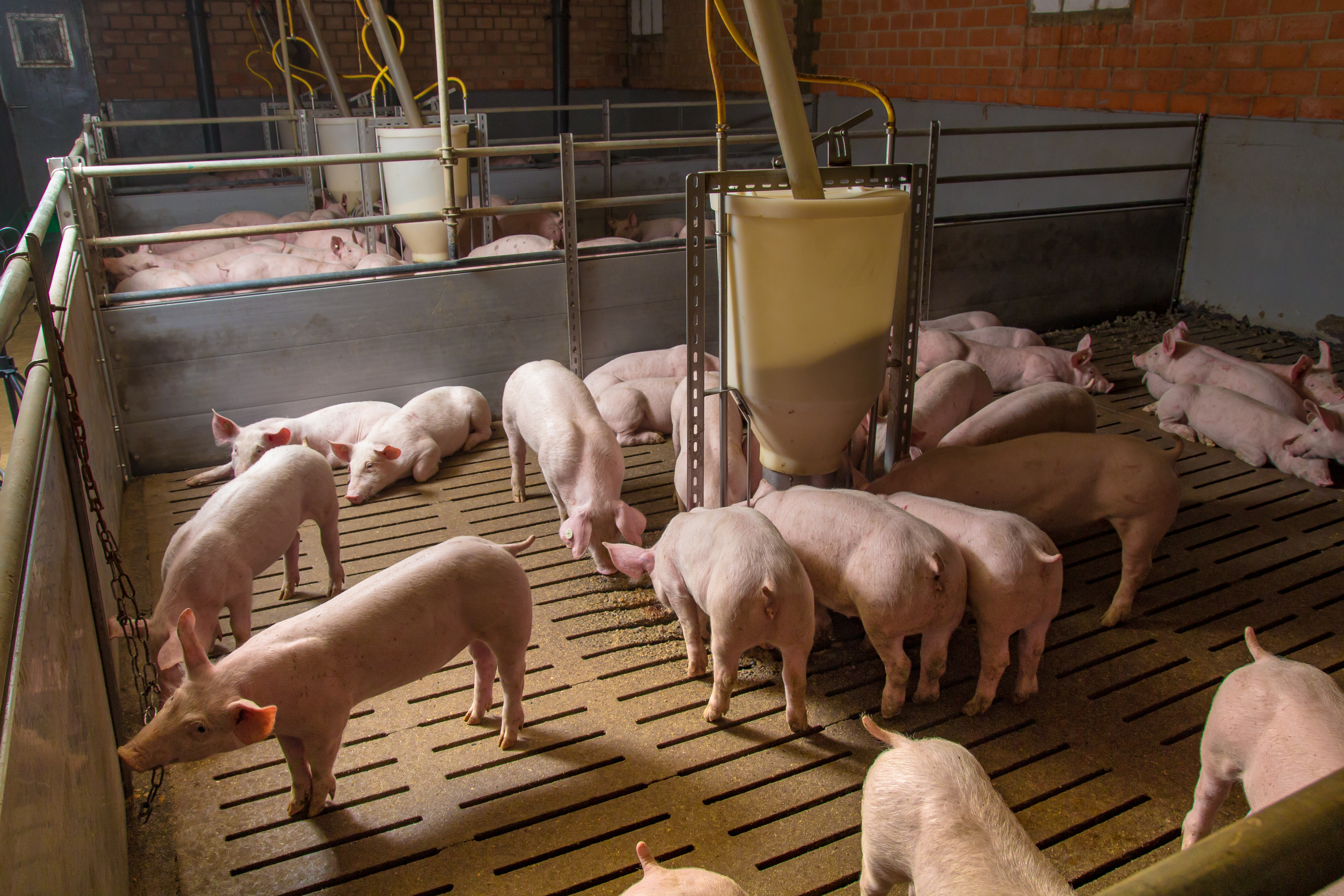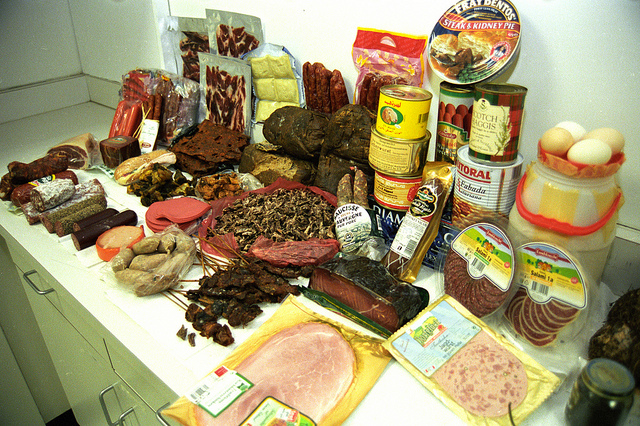



Animal AgTech Innovation 2020: stopping African swine fever in its tracks
African swine fever (ASF) continues to decimate domestic and wild swine herds across Europe, Asia and Africa, and now threatens to move further west. We speak to one expert about the invention of novel methods to protect naïve pig herds from an ASF epidemic.The race to develop a commercially viable vaccine for African swine fever (ASF) has so far been a slow and painstaking one, and with the virus continuing its rampage through China, southeast Asia and eastern Europe, scientists are investigating alternative effective, long-term control methods.
Animal feed components have been highlighted as one of the primary avenues for spread of the ASF virus across borders with research trials illustrating its stability and capacity to survive long-haul travel, including transboundary shipping. One research paper published in 2018 showed that some ingredients common in swine feed, including soybean meal, lysine hydrochloride and vitamin D, posed a significantly higher risk than other ingredients in harbouring the virus and encouraging its survival.
We speak to Dr Scott Dee, Pipestone Applied Research, who currently coordinates a team of researchers conducting world renowned and published research trials on genetics and production. Most recently Scott has been investigating the survival of viral pathogens in animal feed ingredients and how spread of ASF through this avenue can be prevented.
What are the main proven routes of transmission of ASF into naïve herds?
There are many routes, this virus is extremely stable outside of the host. It’s shed in the blood so is very easy to contaminate the environment, especially when there is a large outbreak with high mortalities – this is what we’ve seen in China.
With that there is the capacity to contaminate footwear, truck tyres and equipment moved between farms.
Equally, infected pigs, both domestic and wild, come into contact with naïve animals whether through deliberate introduction for breeding purposes or accidentally.
The newest route, which we’re investigating now, is contaminated feed and feed components.
The latest research has shown that the virus can survive for extended periods of time in feed and that this is then fed to domestic pigs, thereby introducing the virus to that herd.

How does feed come into contact with contaminated materials?
Environmental contamination is common in outbreak areas so through handling and movement, feed can be contaminated with the virus.
Processing methods used in some areas also increase the likelihood of contamination. In some parts of China, when grain is harvested it is laid out on the ground to dry out in the sun. They then allow vehicles to drive over the top of the grain to crack it up, after which it is collected, bagged up and sent out for export.
It sounds crazy but it’s true, it’s been a common past-time for many years.
If you have a contaminated environment and you process your feed this way, there is a large chance that the feed is going to come into contact with the virus. Working with Kansas State University showed us this was a possible method of infection. We showed that if we inoculate feed with the virus, it can survive. This also applied to other products, such as sausage casings, pet food and vitamins.
Our Chinese colleagues followed up this research by taking samples of grain processed on the ground and confirmed the presence of the virus in grain stores.

Which methods of introduction pose the highest risk to the US herd?
Contaminated meat is probably the most common and high risk means of the virus moving, simply because illegal movement of meat across borders is so common. We also know that the virus survives well in pork.
The risk of contaminated feed is not nearly as high but there is so much feed moving from country to country, this raises the level of risk. There is a significant volume of feed ingredients being imported to the US from ASF-positive regions which is worrying. Soy-based products are being imported daily and we know soy provides a protective environment for the virus so this poses a big risk.
There are also certain vitamins only produced in China so we still need to import these products. Equally, most of the soy being imported from areas processing grain on the ground is being labelled as organic and we don’t produce organic soy in the US.
The question now is: how do we serve these niche markets in the US that truly need those products without endangering our livestock?
What have been the main routes of control of the virus to date?
Viruses are usually controlled with a vaccine, however we do not have one for ASF yet. This is likely to come a little further down the road because it is a very difficult virus to work with – it is very complex and hard to understand.
In North America, we’ve been looking at approaches to keep the virus out of the continent. This has led to increased focus at border control and research into mitigating the risks of imported contaminated grains, for example.
What alternative approaches to controlling the disease are you proposing?
We’ve developed a programme called Responsible Imports, which is a science-based way to introduce products from high-risk countries, specifically vitamins, minerals and amino acids from China. It's a feed quarantine programme which allows us to store the products in isolation for a period of time before then allowing them into US feed mills and onto pig farms.
The virus doesn’t survive forever so time is on our side here. If we can hold these products in a stable, warm environment that encourages the decay of the virus, for the required amount of time, we can ensure the products leave virus-free.
A lot of companies have enrolled in this programme, and in Canada this method has been rolled out on a national level.
This is the holding time approach.
Our other approach has been to investigate feed additives that either kill the virus or reduce the quantity of viable virus and protect the pig. We call this Feed Additive Mitigation.
I’m currently testing various chemistries and products that are in development around the US on PRRS, PED and Senecavirus. As there are only two labs in the US that are able to work with ASF, I can only work with other notifiable viruses which are a problem in their own right but can also replicate the characteristics of ASF.
The research has yielded positive results so far – the mitigants are extremely effective in suppressing the virus. What’s useful to note is that these additives are already used in pig feeds.
We can actually use these two approaches – Responsible Imports and Feed Additive Mitigation – together, whereby we introduce the feed additive and then quarantine the products, which would allow for shorter quarantine times whilst ensuring the product is safe for pigs.
I think this is some light at the end of the tunnel for countries looking for ways they can actively suppress the virus and prevent its spread.
The next step, which is likely to take more time, will be targeting governance and controlling the movement of risky materials and products across borders.
Do you have any predictions on the movement of ASF in 2020?
I expect that there will be another episode of the disease in China 2020. This will be unlike the original epidemic when the national herd was naïve to the virus, but with the virus still present and circulating in pigs across the country, re-stocking with ASF-negative animals taking place already and no proven vaccines available, there is a high risk of another large outbreak. Add to this scenario the pork in cold storage that is being released periodically – a lot of this is likely to be contaminated if frozen before ASF was confirmed in the country – and this is all dry kindling for the fire.
In Europe the virus is moving further west: Germany and Denmark are on high alert and are trying to prevent the movement of wild boar but really, I think Europe need to put more focus on contaminated feed.
In the US, Canada and Mexico, I believe the implementation of mandatory quarantine protocol and controlling import of risky products will keep the disease out – I think this is definitely achievable.
Dr Scott Dee will be presenting his research on African swine fever at the Animal AgTech Innovation Summit in San Francisco, 16 March 2020.









